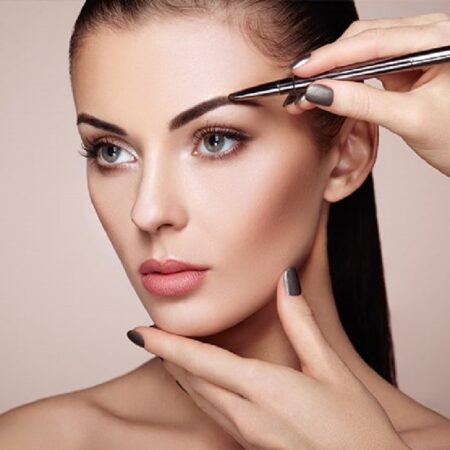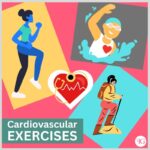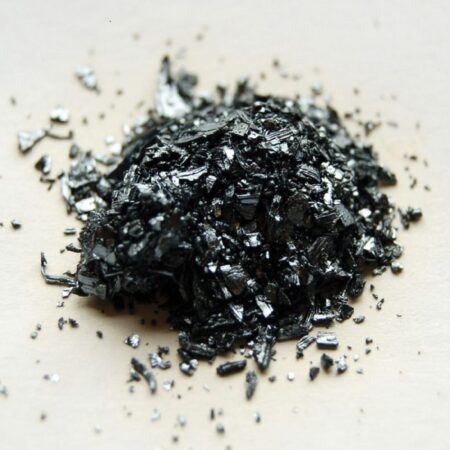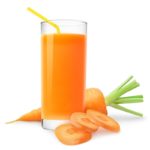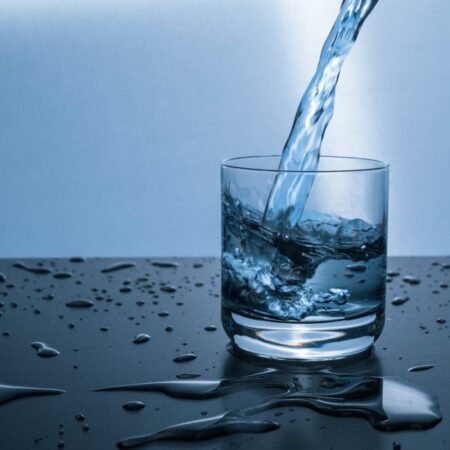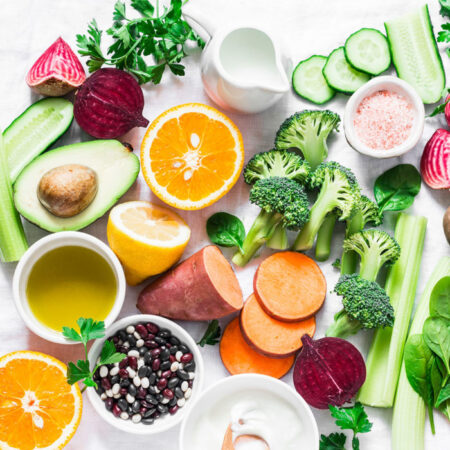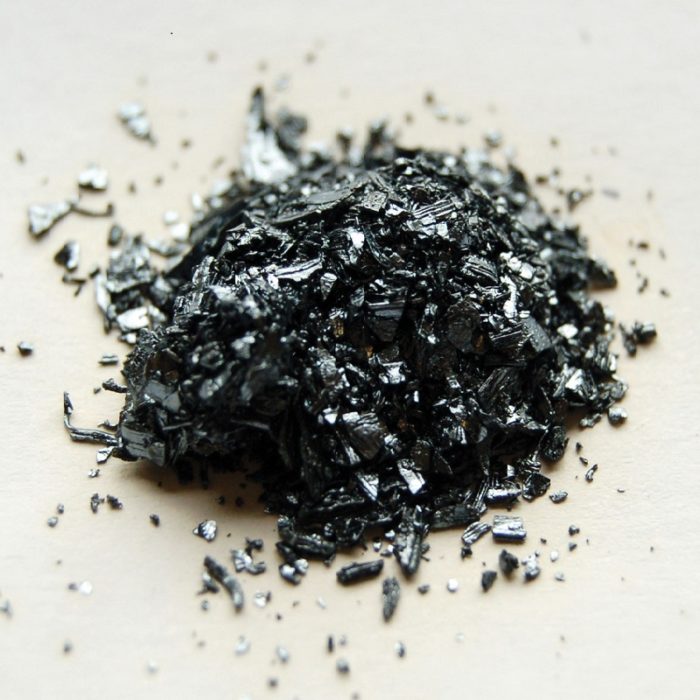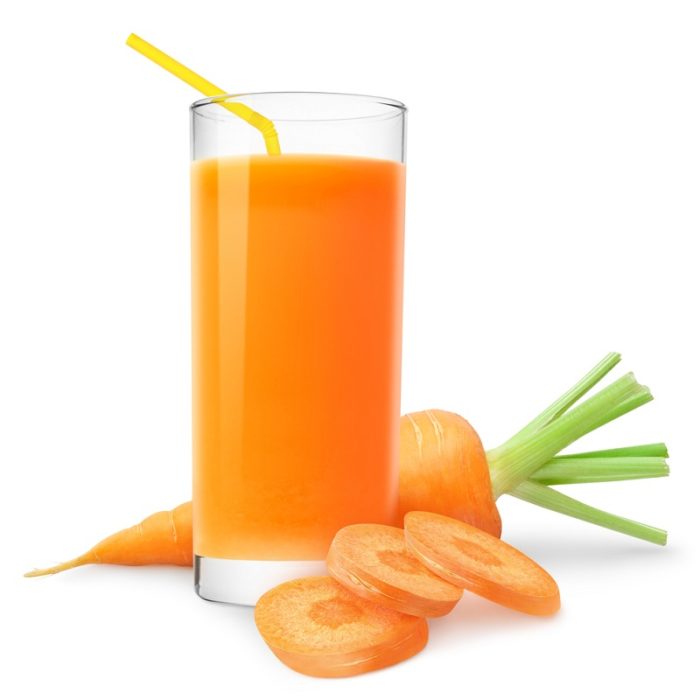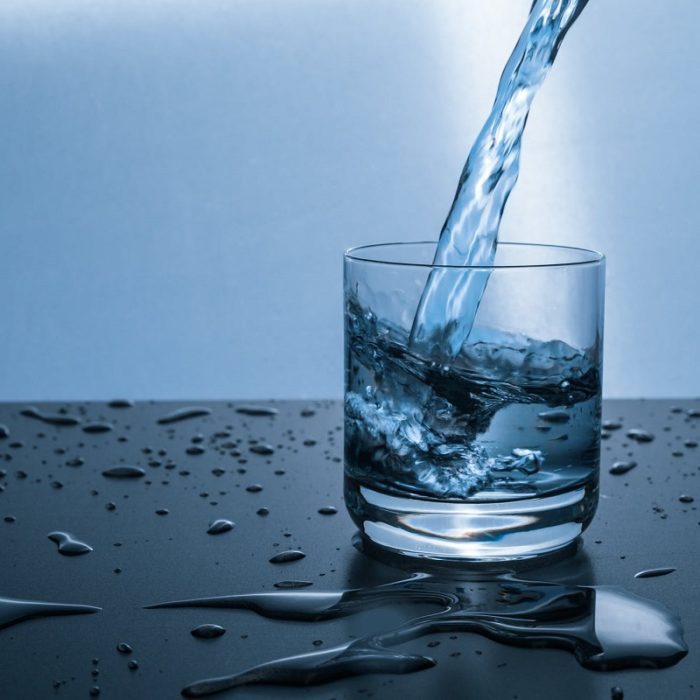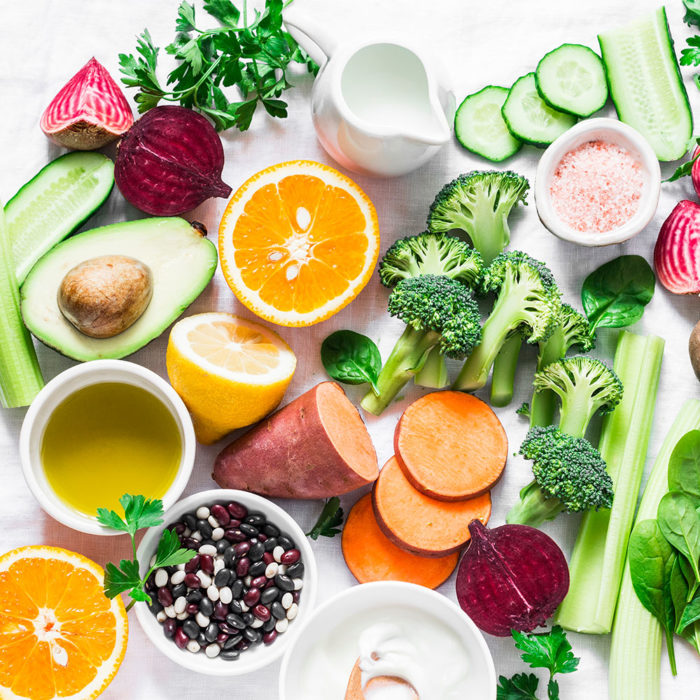22 Best Benefits Of Oats For Skin, Hair, And Health
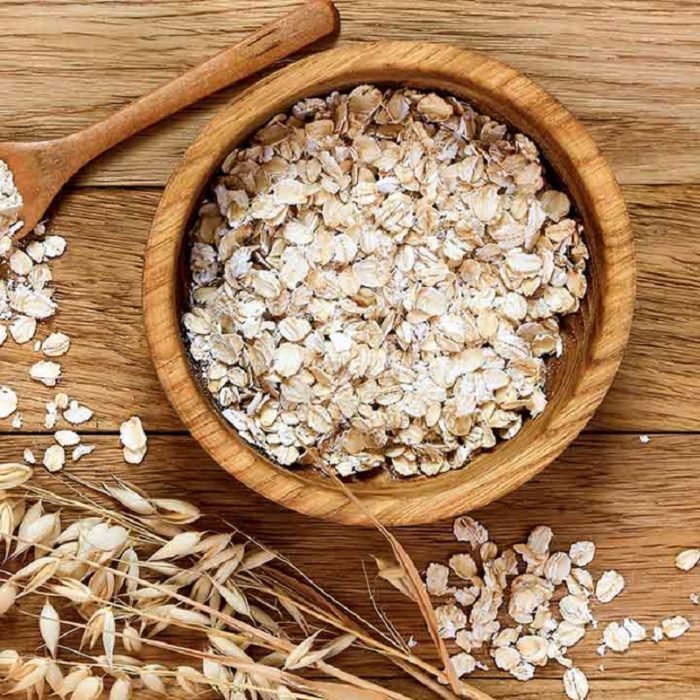
One of the most famous breakfast choices – oats. And they are so for a reason. Oats are a species of cereal grain known for its seed. Apart from human consumption, oats are also used as feed for livestock. And oatmeal is what is made out of oats – oats that have been ground, milled, rolled, or steel-cut.
If you don’t eat oats, you need to make them a part of your routine right away. But why? Well, we will tell you.
Table Of Contents
- What Are The Health Benefits Of Oats?
- Do They Have Benefits For Skin As Well?
- And Hair?
- What More Do I Have To Know About Oats?
- Their History?
- What Are The Nutrients In Oats?
- What About The Recipes?
- Selection And Storage
- Any Other Uses Of Oats? And How To Cook?
- Fun Facts? Any?
- Where Do I Buy Oats?
- I Am Wondering If Oats Have Side Effects Too
What Are The Health Benefits Of Oats?
This cereal that is commonly eaten as a breakfast option comes packed with nutrients. The dietary fiber (beta-glucan being the most important of that) and minerals present in oats help avert numerous dangerous conditions like heart disease, diabetes, obesity, and even cancer. They also enhance the health of your skin and hair.
1. Improve Cardiac Health
Oats contain a powerful fiber called beta-glucan that helps lower cholesterol levels. Beta-glucan is the main component of the soluble fiber in oats, and it reduces bad cholesterol without affecting the levels of good cholesterol (1). The antioxidants in oats (avenanthramides and phenolic acids) work along with vitamin C to prevent LDL oxidation, which can also cause heart disease (2).
Oat bran also contains vitamin E, another nutrient for heart health. More interestingly, oat bran contains more fiber (15 to 26 percent) than oatmeal (7 percent). In one study, oat bran intake was linked to 12 percent decrease in average total cholesterol (3).
According to another Australian study, oat fiber is more effective in lowering cholesterol levels than wheat fiber. The study also states that oatmeal or bran can indeed reduce the risk of cardiovascular disease (4). Oat bran also helps by blocking the absorption of those substances in the gut that can contribute to heart disease (5).
As per the Harvard Medical School, oats are the best form of whole grains to lower cholesterol levels. And to include more whole grain oats in your diet, you can try the steel-cut version (6). According to a report by the University of Wisconsin Madison, beta-glucan, which is exclusive to oats, also acts as a heart-healthy chemical (7).
2. Aid In Diabetes Treatment
Oats have a low glycemic index, and their high fiber content helps regulate blood sugar levels. Also, oats, being rich in fiber, are digested slowly. Foods that are digested quick can cause quick blood sugar spikes – making it difficult to manage blood sugar spikes. Oatmeal makes the contents of the stomach much thicker, thereby making them get digested slowly. As per one study, oatmeal can also reduce insulin dosages.
As per one study, oats consumption has a beneficial effect on the glucose and lipid profiles in patients with type 2 diabetes (8). Beta-glucans in oats were also found to reduce blood glucose concentrations upon consumption (9). Numerous studies have also hinted that oats or foods enriched with oats can significantly decrease postprandial hyperglycemia. Also, not all kinds of oats are good. Stay away from flavored or instant varieties – these are loaded with sugar and offer the opposite of what you are looking for (10).
You can use oats as a replacement for bread crumbs in your recipes.
3. May Help Relieve Constipation

Since oatmeal is rich in fiber, it also can help relieve constipation. Oats were also found to increase stool weight, thereby treating constipation. They can even play a protective role against colorectal cancer (11).
In another study, oat bran was found to improve constipation and the bioavailability of B12 in older adults (12).
Oats are rich in insoluble fiber. This is particularly true for steel-cut and old-fashioned rolled oats. Insoluble fiber is very good for gut health, with one of its benefits being the treatment for constipation.
However, certain individuals have reported symptoms of constipation after having oatmeal. The reason could be that oatmeal can cause intestinal gas in certain circumstances. Oats also contain high amounts of soluble fiber, which can result in excessive gas.
4. Help Fight Cancer
The antioxidants in oats can help combat cancer. And the fiber in oats can prevent rectal and colon cancers (as already discussed). Though there is limited research on the type of oatmeal that helps fight cancer, it is better to stick to the variety that you feel comfortable with.
A set of 12 studies involving over 800,000 people had revealed that taking a large bowl of porridge (another name for oats) a day can cut the risk of death by cancer by as much as 20 percent. Consuming fiber can also reduce the risk of bowel cancer (13).
Here, we once again talk about avenanthramides, special compounds present in oats. They possess anti-inflammatory properties and are a part of the oat plant’s defense mechanism. These compounds were found to inhibit the growth of cancer cells without harming the healthy ones (14).
5. Help Treat Hypertension
Consuming oats was found to reduce systolic blood pressure by 7.5 points and diastolic blood pressure by 5.5 points. It not only reduces your blood pressure, but also cuts the risk of heart disease by 22 percent. For this purpose, you can choose cooked (non-instant) and organic oatmeal.
Addition of oats to the normal diet of hypertensive patients produced beneficial effects. The study concluded that soluble fiber-rich oats could be an effective dietary therapy to prevent and treat hypertension (15). Another study suggests that a diet rich in oats can reduce the need for antihypertensive medications (16). The beta-glucan in oats also displays beneficial effects on carbohydrate metabolism and blood pressure levels in obese individuals (17).
Oatmeal is also known as a comfort food. It reduces the levels of stress hormones and boosts serotonin – this induces a feeling of calmness (18). All of this also contributes to a low blood pressure.
6. Improve Immunity
The beta-glucan in oatmeal can enhance your immunity levels. A majority of immune cells in your body have special receptors that are designed to absorb beta-glucan. This kicks up the activity of the white blood cells and protects against disease. Oats are also rich in selenium and zinc that play a part in fighting infections.
According to a Norwegian study, the beta-glucan in oats is far more potent than echinacea (a North American flower popular for its healing properties). The compound can accelerate wound healing and make antibiotics more effective in humans.
Intake of beta-glucan was also found to enhance immunity following exercise stress (19). This compound also helps offset respiratory infections post exercise stress. Beta-glucans also improve the ability of macrophages, neutrophils, and natural killer cells – making them further effective in fighting against a wide range of microbes like bacteria, viruses, and fungi (20).
Beta-glucans are also used to improve immunity in individuals suffering from chronic fatigue syndrome or physical or emotional stress. They also improve immune levels during intense treatments like chemotherapy or radiation (21).
Early introduction of oats is also associated with a reduced risk of asthma (22). Another study reveals that babies that are fed porridge can be protected from asthma. The risk of childhood asthma can be reduced by two-thirds if the babies are fed oats within the first five months of birth. This can be attributed to the anti-inflammatory properties of oats (23).
7. Can Aid Weight Loss
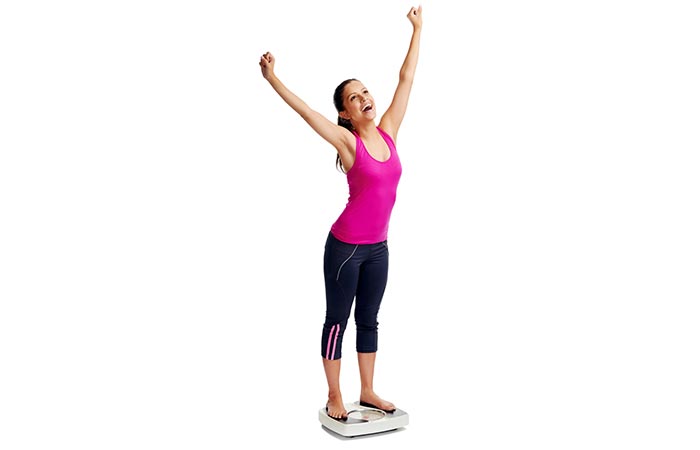
Oats offer weight loss benefits – more so if you purchase plain oats without any added flavorings. Because packaged oatmeal comes loaded with sugar.
Oats, as we already saw, are full of fiber. It can make you feel satiated for longer periods and discourage you from binging. As per a Taiwanese study, oats prevent obesity and the distribution of abdominal fat. And if taken as a daily supplement, oats can even act as an adjuvant therapy for metabolic disorders (24).
Instant oatmeal was also found to increase satiety and energy intake when compared to an oat-based ready-to-eat breakfast cereal. Which is why you can replace foods in your diet with oatmeal and stay full for longer (25). Simply put, oats can fill you up.
Studies have also found that a diet rich in whole grains like oats can help regulate body weight. High consumption of whole grains is inversely associated with body mass index (26).
Oats can also soak up water, which further adds to its satiating properties. And the beta-glucan in oats can delay the emptying of the stomach.
Even oatmeal water is known to aid weight loss. All you need are one cup of oats, a couple of cinnamon sticks, and two liters of water. Blend all. You can consume this on an empty stomach for an entire month before you see results. And, of course, this must be accompanied by proper diet and exercise.
If you are having oats for breakfast, you can flavor them with fiber-rich toppings like raspberries or almonds. And yes, avoid fatty toppings like peanut butter.
8. Promote Bone Health
Oats offer a host of minerals essential for bone health. Steel-cut oats are preferred to the rolled variety as the former has less air exposure and is less likely to turn rancid. However, try to avoid instant oatmeal as it can turn rancid very quickly.
Another important mineral oats are rich in is silicon. This mineral has a role to play in bone formation and maintenance. Silicon can also aid in the treatment of postmenopausal osteoporosis (27).
However, according to a report by the University of Pennsylvania, oats might hinder the absorption of calcium (28). Hence, consult your doctor before taking oats for this purpose.
9. Enhance Sleep Quality
The amino acids and other nutrients in oats help produce melatonin, the chemical that induces sleep (29). And when mixed with milk or honey, oats become a wonderful bedtime snack.
Whole grain oats also promote insulin production, which helps the neural pathways receive tryptophan. Tryptophan is an amino acid that acts as a sedative to the brain. Oats are also rich in vitamin B6, which helps reduce stress (one major cause of sleeplessness). Combining oats with milk and bananas can further help your body relax.
The carbs in oats also release serotonin, the ‘feel good’ hormone that reduces stress and makes you feel calm (30).
10. Relieve Symptoms Of Menopause
Increased intake of fiber can relieve irritability caused during menopause, and oats can work wonders in this aspect.
But there’s a catch – oats contain lignans, a type of phytoestrogens. And studies are unsure about the beneficial effects of phytoestrogens during menopause (31). Also, having cooked oatmeal for a week can increase phlegm and slow down the metabolism in certain people. If you are experiencing such effects, switch to basmati rice and steamed vegetables and consult your doctor.
11. Boost Energy
Since carbs are the body’s primary source of energy, and since oats are rich in carbs, they offer an energy boost when consumed right in the morning. But worry not – oats are absorbed much slower in the body, and this gives you a longer-lasting boost (in addition to not spiking your blood sugar levels). And the B vitamins in oats (like thiamin, niacin, and folate) work together to help your body metabolize energy.
Do They Have Benefits For Skin As Well?
Very much. Oats help prevent acne and improve complexion. They even act as a natural skin cleanser. Your favorite porridge (or oats) has superb benefits for your face – an oatmeal face mask would do the trick.
12. Aid In Acne Treatment
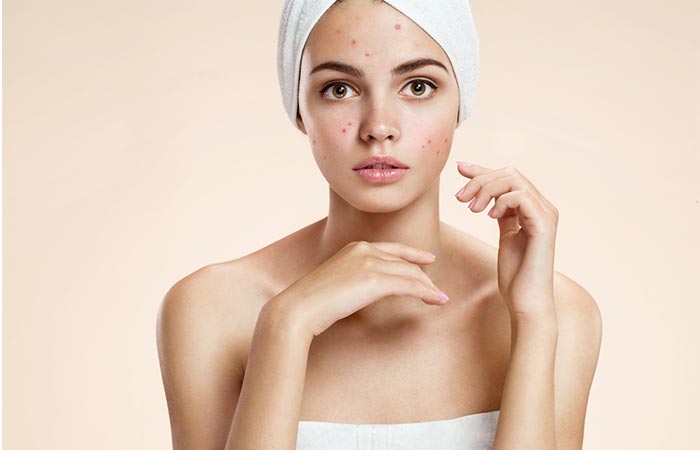
Oatmeal can soak up the excess oil on your skin and help treat acne. You just need to boil half a cup of oatmeal in one-third cup of water and allow it to cool. Apply the thick paste on the affected areas on your face. Leave it on for about 20 minutes, post which you can rinse with warm water. You can also make this mask with tomatoes or egg whites or onions. This is nothing but an oatmeal face wash that you can prepare right at your home.
An oatmeal scrub can also work well in treating acne. The scrub removes dead skin cells and polishes your skin. It also reduces spots and softens your skin. For the scrub, you need one tablespoon each of finely ground oatmeal, finely ground brown sugar, raw honey, and organic jojoba oil. You can also add a couple of drops each of lavender or geranium essential oil. Stir all the ingredients. Apply a small amount of this scrub on your wet face and massage in small, circular motions. You can leave it on for about 10 minutes and then rinse with warm water. Pat dry.
An oatmeal soap can help too. You can either purchase a pre-made soap or make your own (melt an unscented bar of soap, mix oatmeal, and allow to cool). The soap acts as a natural exfoliant and absorbs the excess oil without overdrying the skin.
Oatmeal contains zinc that reduces inflammation and kills the acne-causing bacteria. Zinc supplementation might also help reduce acne lesions (32).
However, certain reports state that oats can aggravate acne. Consult your dermatologist before using oats for treating your condition (33).
13. Treat Dry And Itchy Skin
Oatmeal, according to a study, exhibits direct antioxidant and anti-inflammatory properties – and this can help treat itching associated with dry and irritated skin (34).
Even an oatmeal bath can help. Sprinkle your bath water with baking soda and uncooked oatmeal. You can also use colloidal oatmeal – which is finely ground oatmeal specifically made for the bathtub. Soak in the bath water for about 15 minutes and then pat yourself dry. Apply moisturizer while your skin is damp (35).
Oatmeal powder or oat flour can work wonders on your skin too. You can simply blend oats into a powder and then mix it with hot water to form a paste. Apply it on your skin and leave it on for 15 minutes. Rinse with normal water.
And then, we have oat milk too – which is nothing but oatmeal steeped in hot water (that turns into creamy oat milk). You can use this oat milk for the skin.
14. Moisturize Skin
Oats can remove the dead skin cells and act as a natural moisturizer. And the beta-glucan they contain forms a fine film on your skin. It also penetrates deep into the skin and offers the much-needed moisture.
Simply mix 2 cups of oats with 1 cup of milk and 1 tablespoon of honey. Apply on your skin and leave it on for about 15 minutes. Rinse with cool water.
You can also use oat extract for the skin.
15. Lighten Skin
The fact that oats are being used in products like body scrubs, soaps, and exfoliating creams tells us how beneficial they can be. You can use oats facial (a mixture of oat powder and milk) every morning for skin lightening.
16. Treat Poison Ivy Or Chicken Pox
For thousands of years, oatmeal has been used for treating poison ivy and symptoms of chicken pox. For relieving the itchiness caused by poison ivy or chicken pox, pour oat flour onto a cheesecloth. Tie this around the bathtub faucet and periodically squeeze out water for a tepid bath. You can also rub the pouch on the itchy areas of your skin.
17. Act As A Natural Cleanser
Oats contain compounds called saponins that act as natural cleansers and remove the dirt and oil from the pores. And by the way, they don’t cause irritation.
You can prepare oat milk (by soaking oats in water) that acts as a natural cleanser and toner. Apply the milk to your face using a cotton pad after washing your face.
You can also use oat bran bath for cleansing your skin. Place half a cup of rolled oats in a cloth and tie it into a small bag. Place this bag in your bathtub and press until all the milk is out. You can use this on your body and face (instead of soap) for mild scrubbing.
18. Protect The Skin
The proteins in oatmeal maintain the skin’s natural barrier. They even protect your skin from harsh pollutants and chemicals. The lubricating fats in oats aid in UV protection.
And Hair?
Surprisingly, oats have benefits for your hair too. The nutrients in them make your hair stronger and scalp healthier. They also make it shinier and silkier.
19. Treat Dandruff

You just need 1 cup of oatmeal. Pour the oatmeal into a blender and grind it on a medium setting (till you get a fine powder). Mix this ground oatmeal with 2 cups of boiling water. Stir until the oatmeal is dissolved completely. Allow the mixture to sit for about 10 minutes. Pour this mixture through a sieve into a medium-sized bowl.
To this mixture, add 1 tablespoon of lemon juice and 1 teaspoon of apple cider vinegar. Stir well. You can skip the lemon juice if you have color-treated hair. Now, add about 20 drops of your favorite essential oil to the bowl and stir. You can pour the entire mixture into an empty shampoo bottle. For using it, dampen your hair with lukewarm water and work the product into your scalp. Leave it on for 2 minutes and rinse as usual.
This oatmeal shampoo also treats itchy scalp and prevents excess oil and dirt.
20. Help Fight Hair Loss
The properties of oats that help treat dandruff also help prevent hair loss. To make an oatmeal hair mask that treats hair loss, you need 1 tablespoon each of oatmeal, fresh milk, and almond milk. Mix all the ingredients to form a smooth paste. You just need to ensure your hair is free from tangles before using this mask. Apply gently to your hair and leave it on for about 20 minutes. Rinse with lukewarm water.
This mask strengthens the hair follicles and makes your hair stronger.
Oats are also rich in omega-6 fatty acids that help fix damaged hair (36).
21. Improve Hair Appearance
The appearance of your hair is as important as the strength. For using oats to improve hair appearance, all you need are 3 tablespoons of plain oats, ½ cup of milk, and 1 tablespoon each of coconut oil and honey. Mix all the ingredients well. Apply the mask to your hair and scalp and leave it on for 30 minutes. Shampoo your hair as usual.
This mask makes your hair shine and also renders silkiness to your tresses. It moisturizes your hair as well.
22. Work Great For Blond Hair
Worry not if you have blond hair. Ground oats can work as an excellent shampoo for blond beauties. You just have to rub some ground oats over your scalp and using a bristle brush, gently brush out the excess oats.
That’s the long list of benefits. But sure it doesn’t do any harm to know a little more about oats!
What More Do I Have To Know About Oats?
You also need to know about the different types of oats:
Oat bran – This is the first part of the oat grain that is processed. It is ground from the hull, which is packed with fiber, protein, iron, and magnesium. It is quite low in calories and very easy to cook.
Oat groats – These are what reside inside the hull of the oat grain. Its texture is similar to a thicker rice grain.
Steel-cut oats – These are nothing but oat groats chopped into pieces. Also called Irish oats, they take about 20 minutes to cook on the stove top. One-fourth cup of steel-cut oats has the same nutritional value as half a cup of uncooked rolled oats (we will discuss this).
Scottish oats – These are more finely ground steel-cut oats. They have the nuttiest flavor and natural sweetness of all types.
Rolled oats (also called old-fashioned oats) – Though these are the most processed of all types, they still hold good nutritional value. This is the type of oatmeal you would usually find in store-bought packets (unless specified otherwise). They become less chewy after cooking because of how thinly they have been rolled out.
Oat flour – This is the flour ground from whole oat groats, Scottish oats, or steel-cut oats. It is ground until totally soft.
The difference between steel-cut oats and rolled oats (the two common types) is that the former is cut into pieces, take the longest to cook, and have a toothsome and chewy texture. The latter look flat and irregularly round and can be cooked faster.
Coming to dry oats vs. cooked oats, it just takes half a cup of the former to make one cup of the latter. A cup of cooked oatmeal meets about 12 percent of your daily thiamine requirement, whereas one cup of dry oatmeal gives you about 25 percent.
Dry oatmeal contains higher concentrations of other minerals like iron, magnesium, phosphorous, zinc, copper, manganese, and selenium.
Nice. But what about…
Their History?
People who first started farming wheat and barley (way back in 12000 BC) weren’t impressed with oats. They were just considered a nuisance crop. But it was in 2000 BC in Scandinavia and Poland, where people noticed that oats grew a lot better than the wheat there. Around 1500 BC, farmers in northern Europe (which is colder and wetter, and hence conducive to oat growth) started growing oats on purpose.
During the Roman Empire, people were also growing and eating oats in Italy. By the Middle Ages, oats traveled to the Great Britain. Scottish settlers brought oats to North America in 1600 AD, where people initially grew oats for horses to eat. And then, the crop spread to the rest of the world.
The benefits you just saw are because of the nutrients oats contain.
What Are The Nutrients In Oats?
| NUTRITION FACTSSERVING SIZE 156G | ||
|---|---|---|
| AMOUNT PER SERVING | ||
| Calories 607 | Calories from Fat 90 | |
| % Daily Value* | ||
| Total Fat 11g | 17% | |
| Saturated Fat 2g | 9% | |
| Trans Fat | ||
| Cholesterol 0mg | 0% | |
| Sodium 3mng | 0% | |
| Total Carbohydrate 103g | 34% | |
| Dietary Fiber 17g | 66% | |
| Sugars | ||
| Protein 26g | ||
| Vitamin A | 0% | |
| Vitamin C | 0% | |
| Calcium | 8% | |
| Iron | 41% | |
| VITAMINS | ||
| Amounts Per Selected Serving | %DV | |
| Vitamin A | 0.0IU | 0% |
| Vitamin C | 0.0mg | 0% |
| Vitamin D | – | – |
| Vitamin E (Alpha Tocopherol) | – | – |
| Vitamin K | – | – |
| Thiamin | 1.2mg | 79% |
| Riboflavin | 0.2mg | 13% |
| Niacin | 1.5mg | 7% |
| Vitamin B6 | 0.2mg | 9% |
| Folate | 87.4mcg | 22% |
| Vitamin B12 | 0.0mcg | 0% |
| Pantothenic Acid | 2.1mg | 21% |
| Choline | – | |
| Betaine | – | |
| MINERALS | ||
| Amounts Per Selected Serving | %DV | |
| Calcium | 84.3mg | 8% |
| Iron | 7.4mg | 41% |
| Magnesium | 276mg | 69% |
| Phosphorus | 816mg | 82% |
| Potassium | 669mg | 19% |
| Sodium | 3.1mg | 0% |
| Zinc | 6.2mg | 41% |
| Copper | 1.0mg | 49% |
| Manganese | 7.7mg | 383% |
| Selenium | – | – |
| Fluoride | – |
Talking about whole oats and whole wheat, the former variety contains the endosperm, bran, and germ – while the latter is the wheat form of a whole grain. Both are replete with nutrients.
And coming to brown rice and oatmeal, though both are healthy, there are certain areas where each enjoys the upper hand. Oats are lower in calories (1 cup of cooked oats contains 145 calories) than brown rice (1 cup contains 216 calories). Oats also offer less carbohydrates. However, brown rice offers more amount of niacin and B6, while oats contain double the amount of iron. Brown rice contains slightly higher levels of magnesium and manganese.
Oats contain very less sugar (0.5 grams of sugar for every 100 grams of oats). And every 100 grams of oats contains about 7 grams of fat.
And now…
What About The Recipes?
Oat recipes are simply delicious. And healthy. Our most popular picks include Chocolate oatmeal bars, Banana oats smoothie, and Apple pie oatmeal.
1. Chocolate Oatmeal Bars
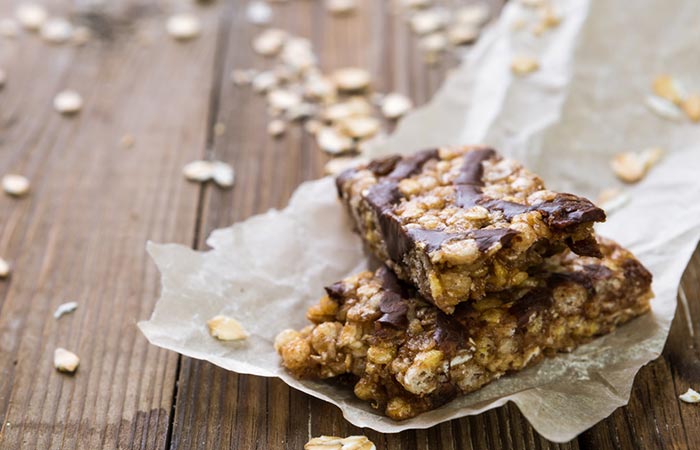
What You Need
- ½ cup of chocolate chips
- 1 cup of wheat flour
- 1/3 cup of fat-free condensed milk
- ½ teaspoon of baking powder
- ½ cup of old-fashioned oats
- ½ teaspoon of baking soda
- ¼ teaspoon of salt
- ¼ cup of canola or soybean oil
- ¾ cup of brown sugar
- 1 teaspoon of vanilla
- 1 egg
- 2 tablespoons of old-fashioned oats
- 2 teaspoons of softened butter
Directions
- Heat the chocolate chips and milk in a heavy saucepan over low heat. Keep stirring until the chocolate melts. Set it aside. Now, heat the oven to 350o F. Spray a square pan with cooking spray.
- Mix the flour, half a cup of oats, baking powder, baking soda, and the salt in a large bowl. Set aside. Stir the oil, brown sugar, vanilla, and egg in a medium bowl using a fork until the mixture is smooth. Stir this into the flour mixture until everything is well blended. Set aside half a cup of dough for topping.
- Pat the remaining dough into a pan and spread the chocolate mixture over it. Add 2 tablespoons of oats and the butter to the dough that was set aside. Mix with a fork until the mixture is crumbly. Drop small spoonfuls of the oat mixture evenly over the chocolate mixture.
- Bake for about 20 minutes or until the top is firm and golden. Let it cool for about 1 ½ hours.
- Serve.
2. Banana Oats Smoothie
What You Need
- ¼ cup of old fashioned oats
- ½ cup of plain low-fat yogurt
- 1 banana, sliced into thirds
- ½ cup of fat-free milk
- ¼ teaspoon of ground cinnamon
- 2 teaspoons of honey
Directions
- Combine all the ingredients and puree until you obtain a smooth mixture.
- Serve immediately.
3. Apple Pie Oatmeal
What You Need
- 1 cup of old fashioned oats
- 2 cups of almond milk
- 1 thinly sliced apple
- 2 teaspoons each of cinnamon and maple syrup
- 1 cup of unsweetened apple sauce
Directions
- On a medium saucepan, combine the oats, almond milk, cinnamon, and maple syrup. Heat on low flame until most of the milk is absorbed.
- Add the applesauce and stir well.
- Wait until all the milk and applesauce are absorbed (might take some 20 minutes).
- Remove from heat and serve.
This is one oatmeal recipe for weight loss. It boosts your metabolism and aids in your weight reduction efforts.
And now, we head to an important section…
Selection And Storage
Selection
Proper selection is essential to ensure that you get the maximum benefits from this cereal.
- It is advisable to buy oats in small quantities because this grain has a higher fat content than other grains and hence, goes rancid more quickly.
- Nowadays, oats are available in prepackaged containers as well as in bulk bins.
- While purchasing oatmeal, always look at the ingredients list on the packet to ensure that the product does not contain salt, sugar, or other additives.
- Always prefer to buy rolled oats or oatmeal from health shops.
- When purchasing from bulk bins, ensure that the bins are covered and free from debris and moisture. The store should have a good product turnover to ensure that the product is fresh.
Storage
Proper storage is also a vital factor to ensure that the product retains its freshness and flavor till it is used.
- Rolled oatmeal, like all other grains, should be kept in an airtight container to prevent moisture and vermin intrusion.
- It should be stored in a cool, dark cupboard for up to three months or refrigerated for up to six months.
- Oat bran has high oil content and therefore, should be refrigerated.
- Oat flour has a slightly longer shelf life in comparison to wheat flour as oats contain a natural antioxidant that discourages rancidity
- Oat flour should be refrigerated and used within three months. Ensure usage of your oatmeal within the expiry date stamped on the package.
And…
Any Other Uses Of Oats? And How To Cook?
If you are wondering how to consume oats, this is it. Oats are quite versatile and can be consumed both in cooked and raw forms. Uncooked oats are rather difficult to chew, and cooking softens them. Alternatively, you can achieve a softer texture by soaking a cup of raw oatmeal in two cups of water and leaving it for 2 hours. This raw oatmeal can be blended along with water and consumed.
Given below are other tips for eating and cooking oats.
Eating
Steel-cut Oats: Considered most suitable for breakfast, these are basically whole oat groats that have been steamed and cut into pieces. These non-flattened, steel-cut oats are coarse. Hence, they can be soaked overnight in hot water and cooked in the morning to make a pearly, chewy, whole grain breakfast. They can also be blended and are the most nutritious of oats.
Instant Oats: These are widely available in stores in small packets and are considered the least nutritious due to sugar and additives. They have a flour-like consistency and are heavily processed, steamed, rolled, dehydrated, and toasted. Being easy to blend, they can be cooked in a minute or two. Always prefer plain instant oats as the flavored ones have a high content of sugar. Plain oats have added nutrients as they have been stripped of their original nutrients.
Oatmeal Bread: Prepared from oat flour, oatmeal bread is extremely nutritious and as good as regular toast. You can try making oatmeal bread at home.
Oatmeal Cookies: These yummy cookies are a perfect combination of taste and nutrition. They can be consumed with peanut butter or chocolate bits and make for a filling snack. They are a favorite of kids.
Oat Bran: This is basically ground oats with the husk still attached. It is difficult to digest and should be soaked before use. These are generally added to smoothies and are very fibrous and nutritious.
Cooking
Cooked oats are relatively sweeter than the uncooked ones. Different varieties of oats require different cooking methods and take different durations to cook.
Rolled oats take approximately 15 minutes whereas steel cut oats can be cooked in about 30 minutes.
Oat groats, being harder, require more time and water and can be cooked in 50 minutes. The best way is to add oats to cold water and simmer. They can be included in many dishes.
- Filling Meal or Snack: Oats can be added to your smoothies or green smoothie to make a filling meal or snack.
- Nutritious Breakfast: A piping hot bowl of oatmeal with fruits and nuts can be a tasty and nutritious breakfast.
- As A Soup Thickening Agent: Oat flour can be used instead of corn flour to thicken sauces and soups. It can be added while the soup is being heated so that it becomes thick. Breadcrumbs can be replaced with oats.
- Coating For Tofu: It can be used as a coating for tofu. Tofu can be dipped in milk and then in oatmeal and fried to make it more crispy.
- Making Of Pancakes Or Porridge: Oatmeal can be used to make pancakes or porridge. For this purpose, you can soak your porridge oats in the fridge overnight and eat it the next day straight away.
- As A Sprinkling Agent On Cereals: Oat bran can be sprinkled on your hot or cold cereal.
- Making Of Bread, Pastas, Or Muffins: You can use whole oats or oat flour to make bread or muffins. Being extremely flexible, oats can replace fast and processed foods and can be easily used in making pastas, muffins, and croissants.
And now, the fun part…
Fun Facts? Any?
- Oat is an annual grass, just like wheat.
- Besides being made into cereals, the second main usage of oats in food products is as oat biscuits.
- As per a survey, oats rank No. 1 amongst breakfast foods.
- October 29th is the National Oatmeal Day in the USA.
- Almost 75 percent of US households were found to have oatmeal in their cupboards.
- The most popular oatmeal toppings are milk, sugar, and fruit.
Also…
Where Do I Buy Oats?
You can hop to your nearest supermarket. Or check for oats online at Amazon or Bigbasket. Some of the top brands (purchase link included) are –
Quaker (certain people use Quaker oats for skin benefits), Saffola, Kellogg’s, and Bagrry’s.
You do have something else in your mind, don’t you?
I Am Wondering If Oats Have Side Effects Too
Though oats are safe for most people (pregnant and breastfeeding women included), they can cause gas and bloating in some people. Applying oats to the skin can also cause breakouts. A couple of other side effects include:
- Might Block The Intestine
If you have difficulty in chewing, avoiding oats is best. Poorly chewed oats can block the intestine and cause issues.
- Digestive Issues
Avoid consuming oat products if you have any digestive ailments. They might get aggravated in some people. Consult your doctor.
Conclusion
Oats are so incredibly good that we didn’t even have to tell you that they are so. You already knew it all, didn’t you? Make this your regular breakfast and see your life getting better – with each passing day.
And wait, tell us how this post has made your day better. Do leave a comment below.
Expert’s Answers For Readers’ Questions
Q. Is oatmeal gluten-free?
A. Usually, yes. It is safe for people with gluten intolerance. But if it is a pack of oats that is commercially processed or contaminated, it might contain gluten.
Q. Can you eat raw oats?
A. Yes, but it is better you don’t eat them dry. Since oats are rich in fiber, eating them dry can cause intestinal issues. You can pour milk over uncooked oats or even mix them in water. Though dry oats contain higher concentrations of some nutrients, it’s better to consume them with a liquid.
Q. What is the best time to eat oats?
A. Most people prefer oats for breakfast, but you can have them whenever you want to.
Q. Does microwaving oatmeal affect its glycemic index?
A. No, it won’t.








